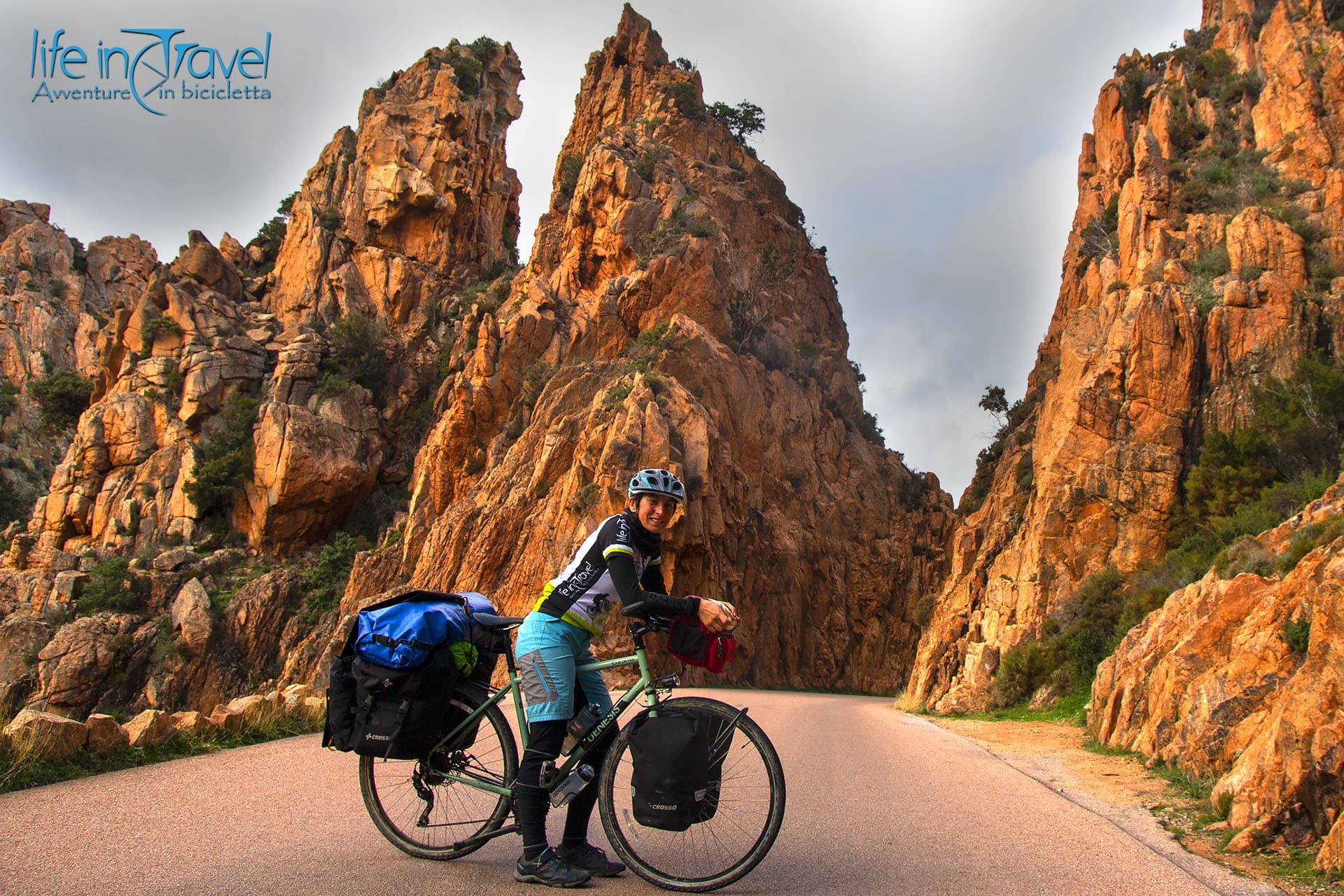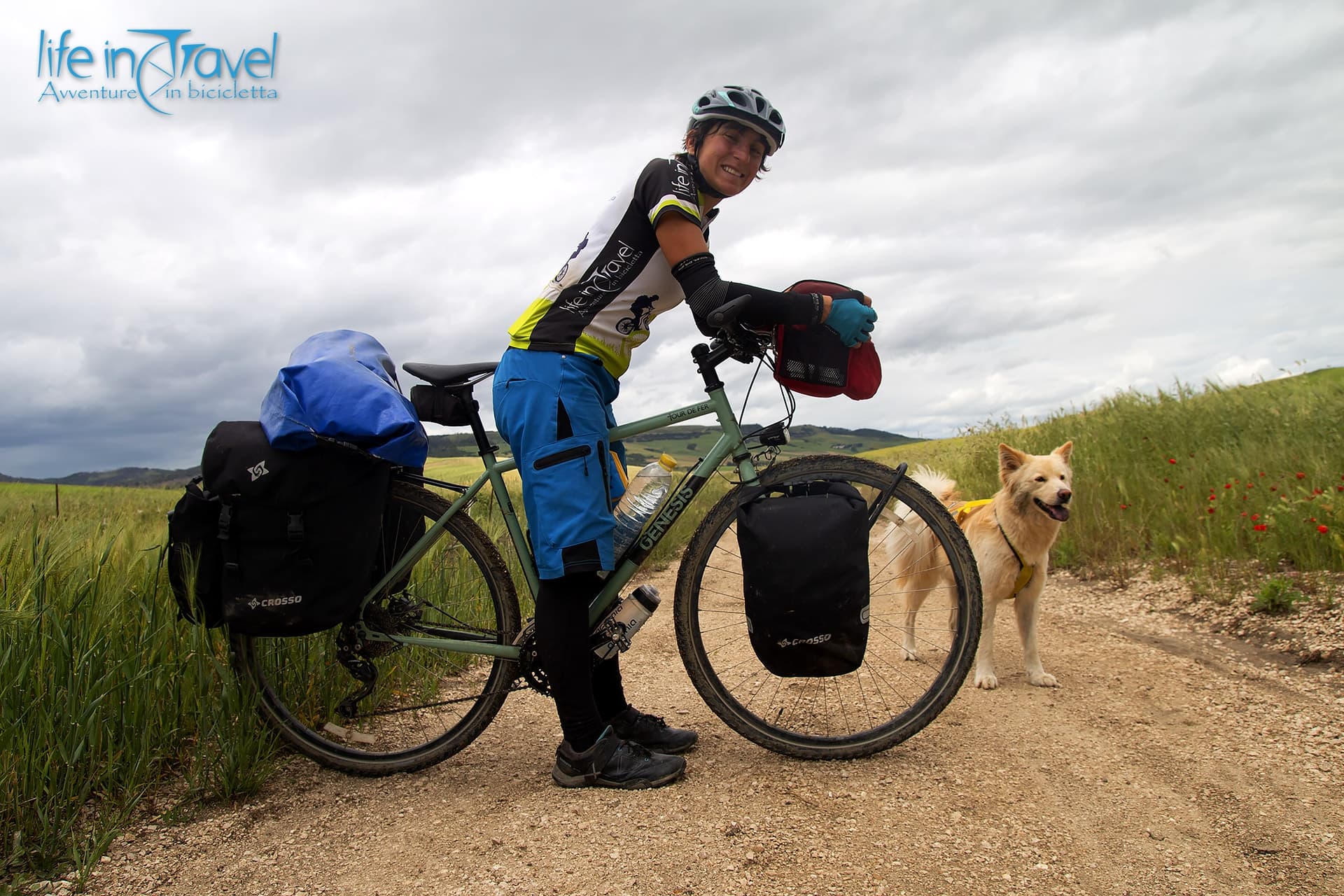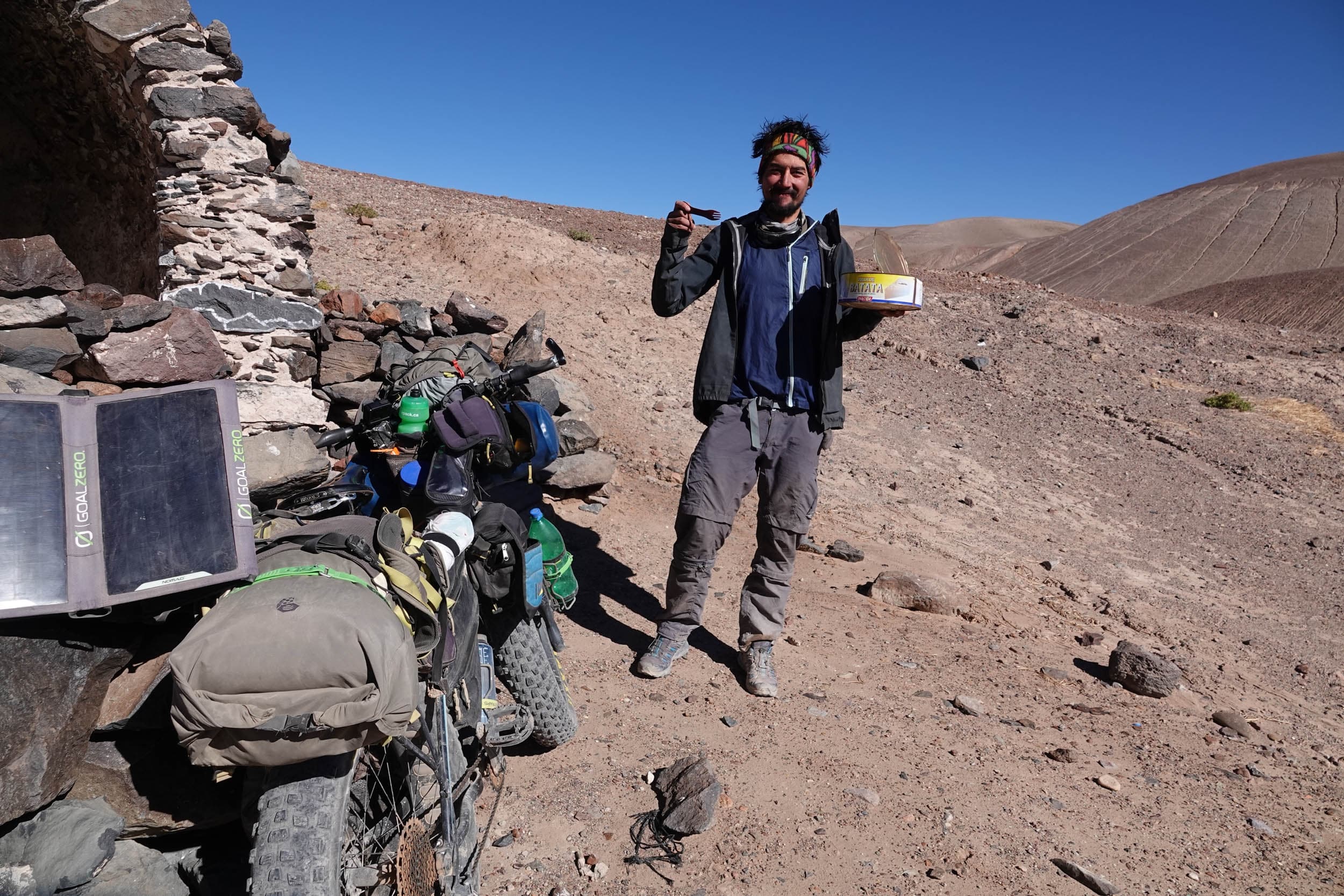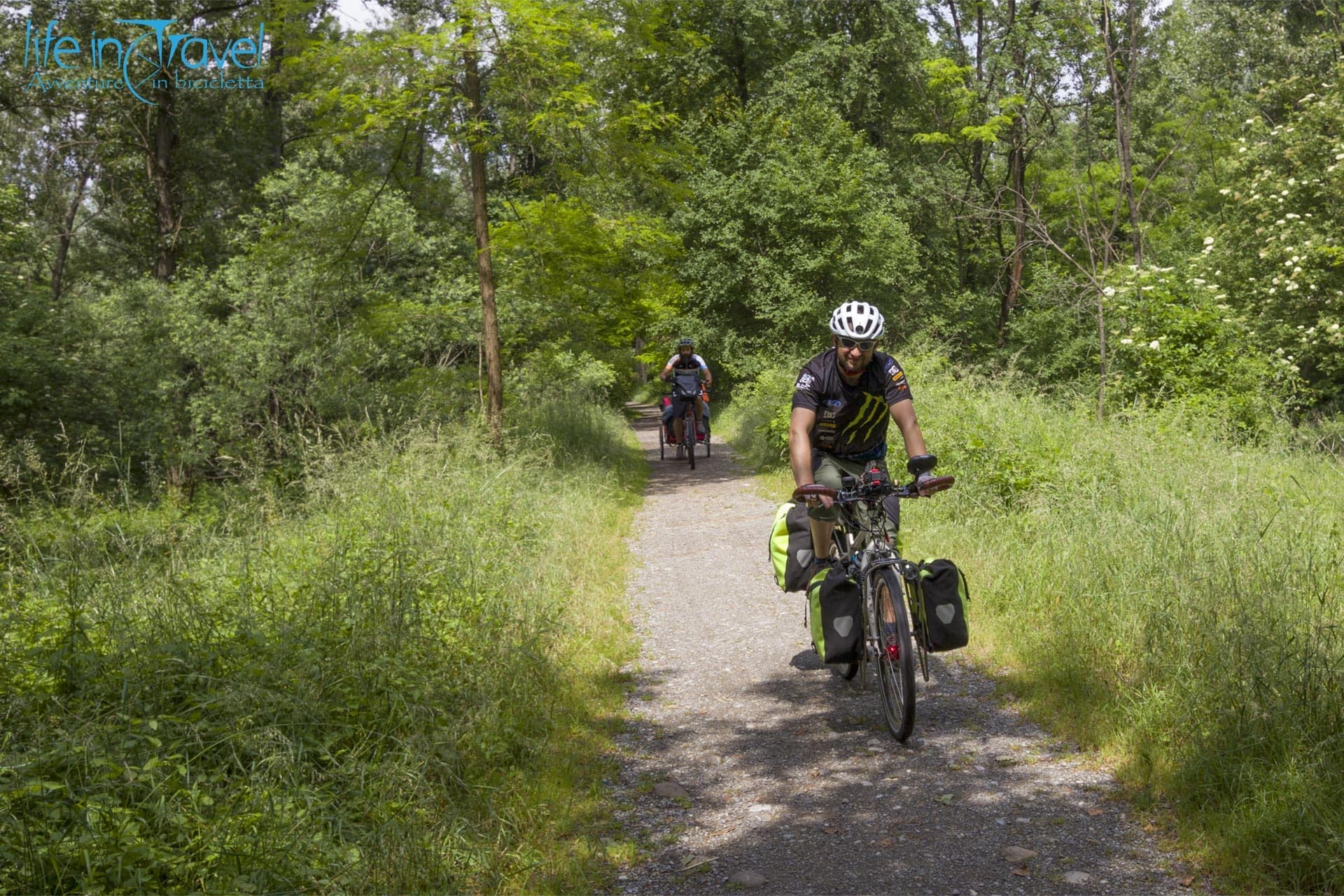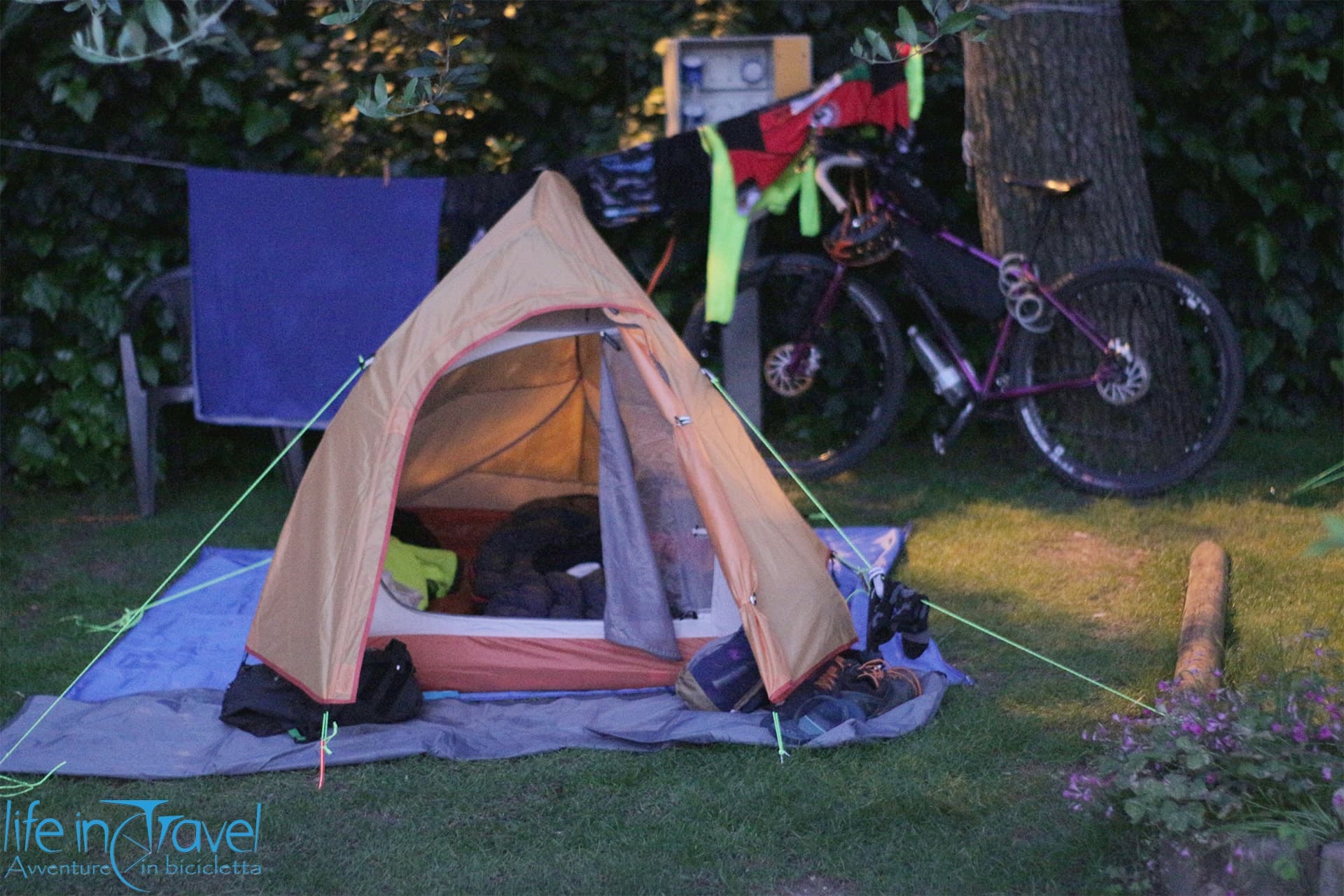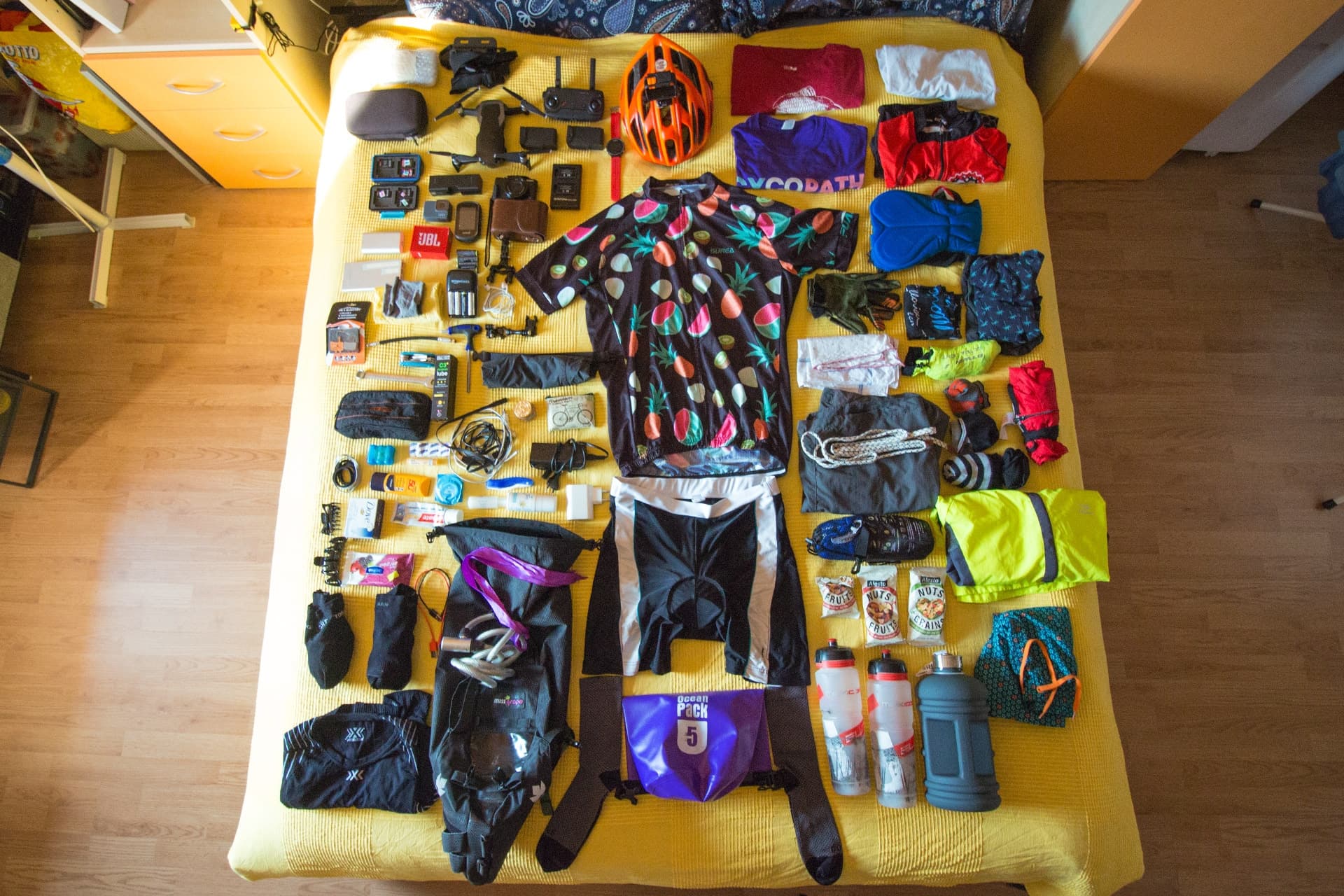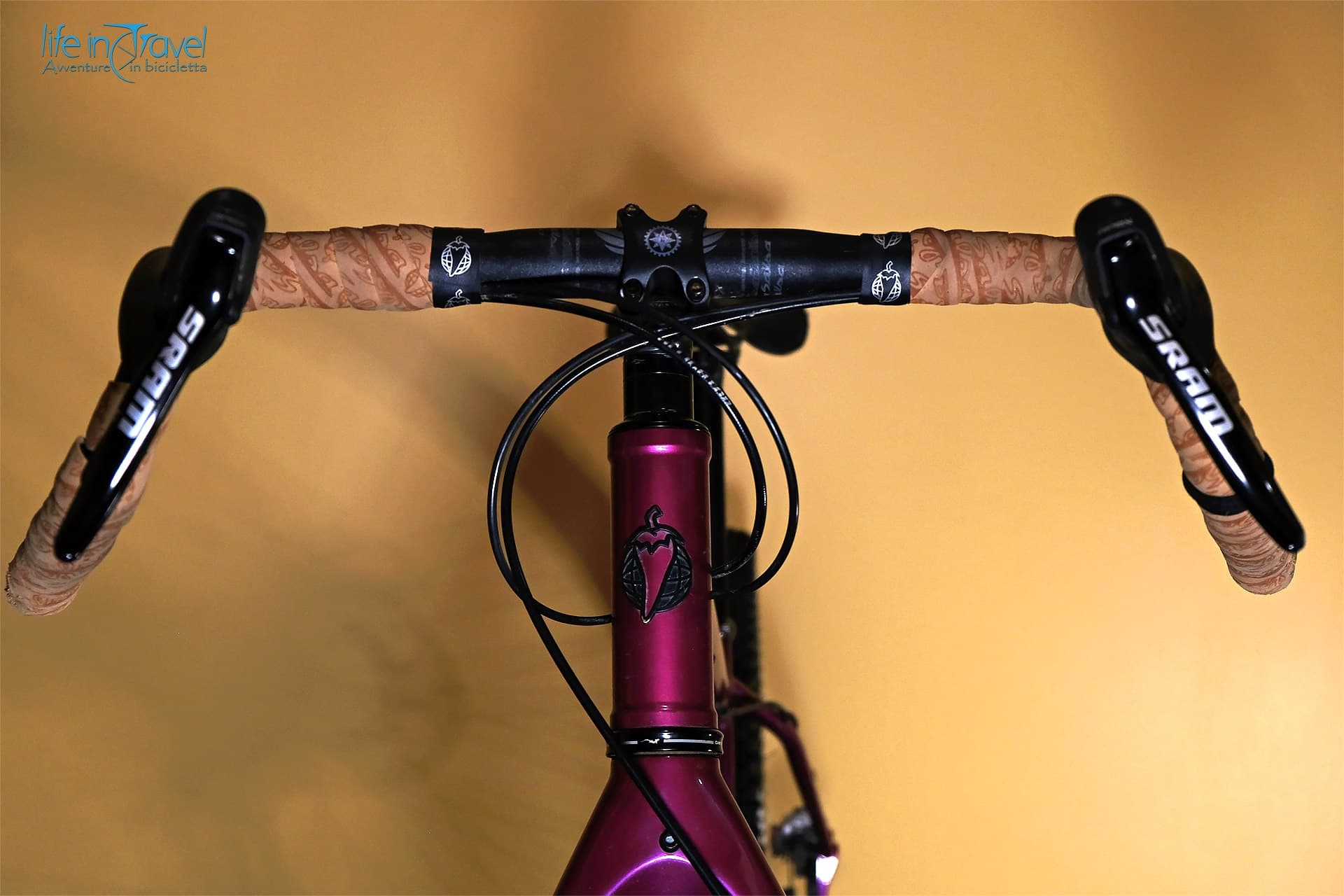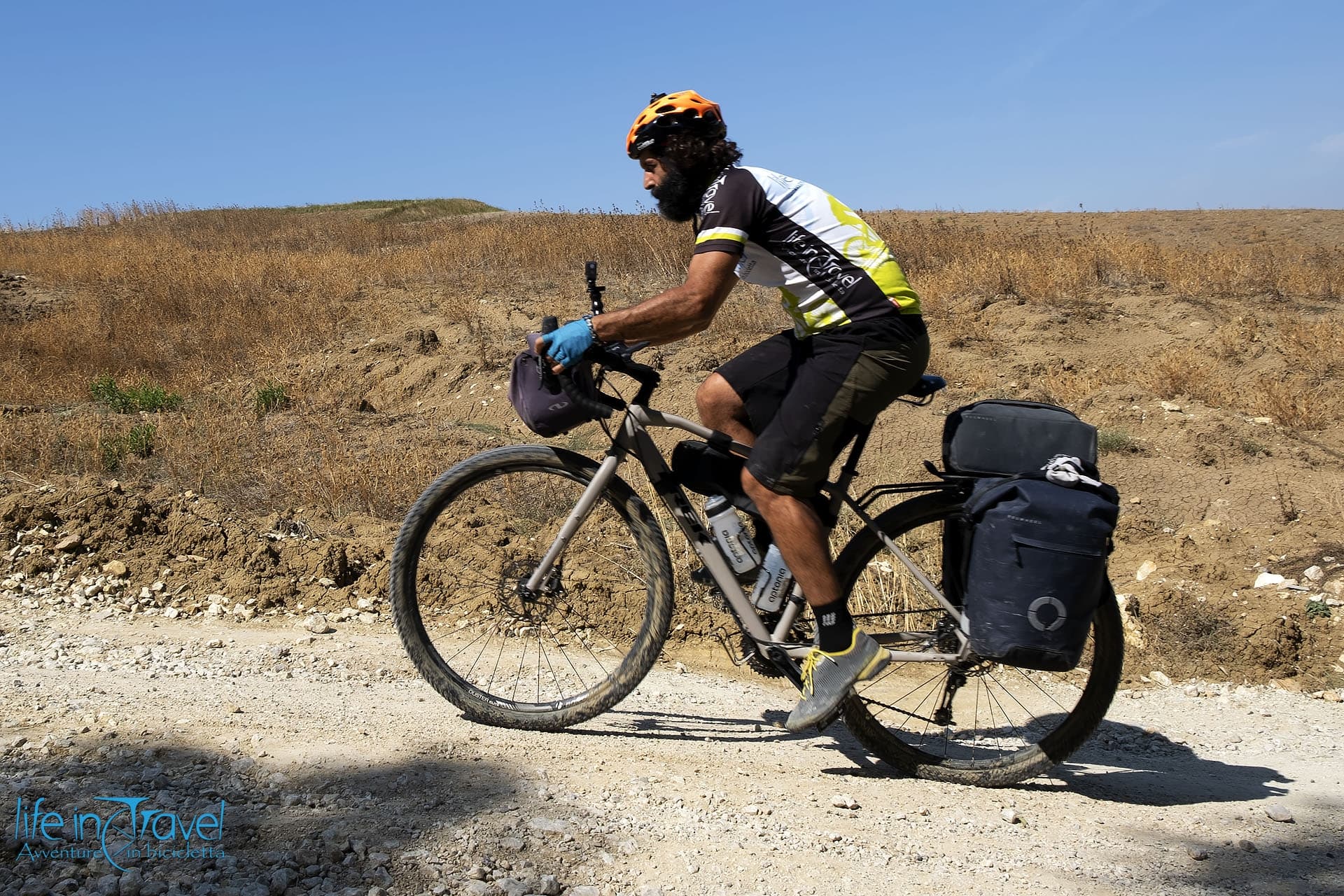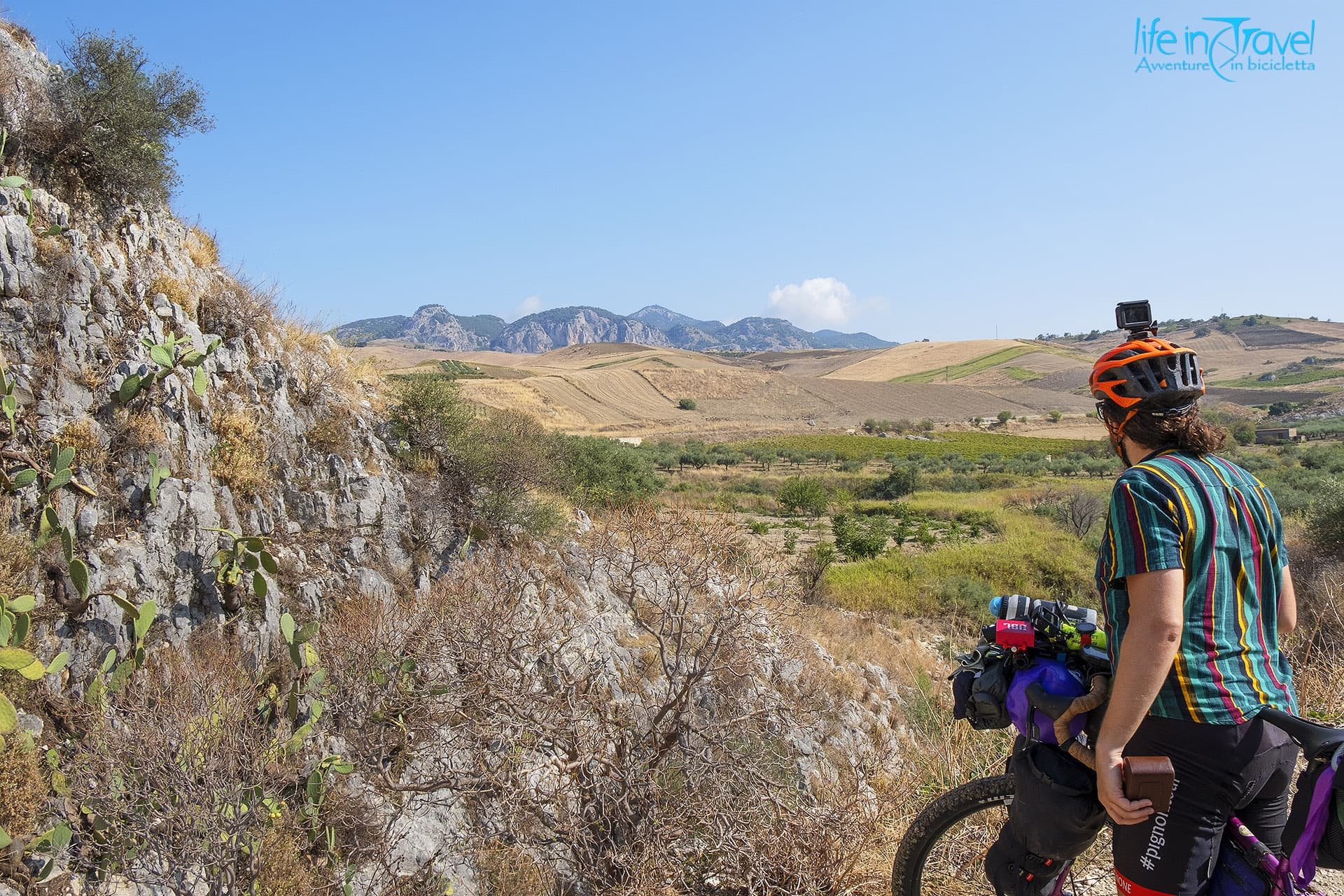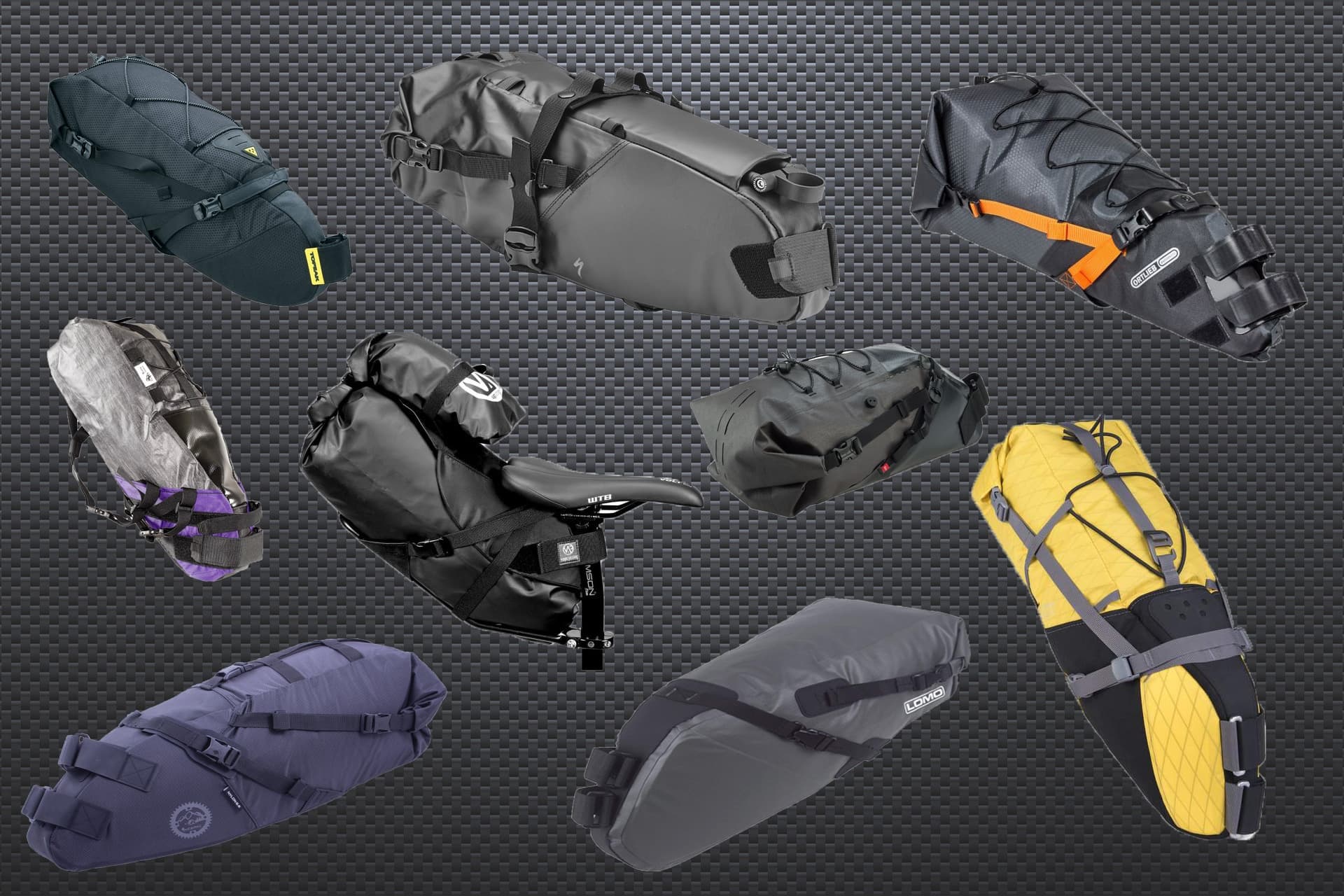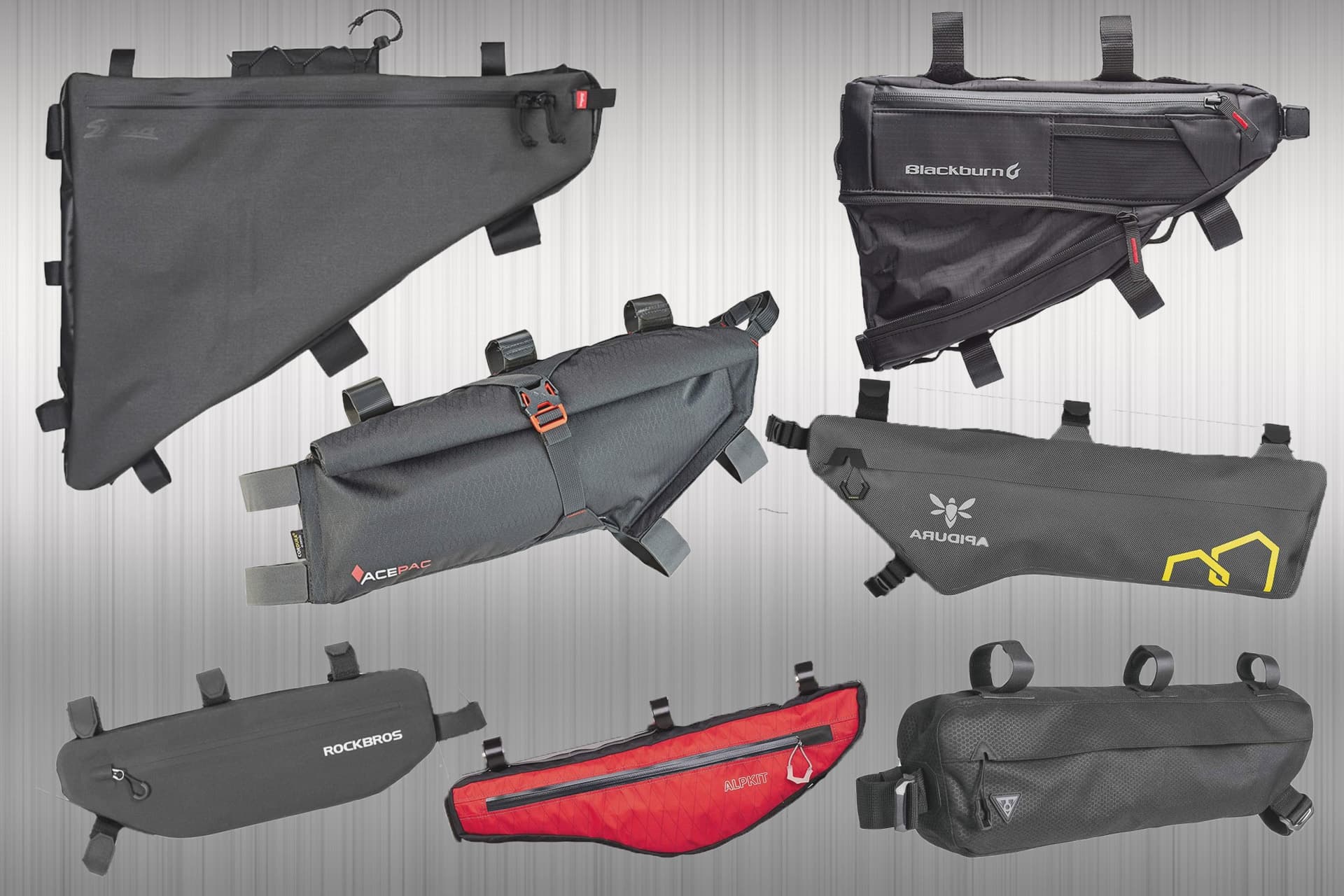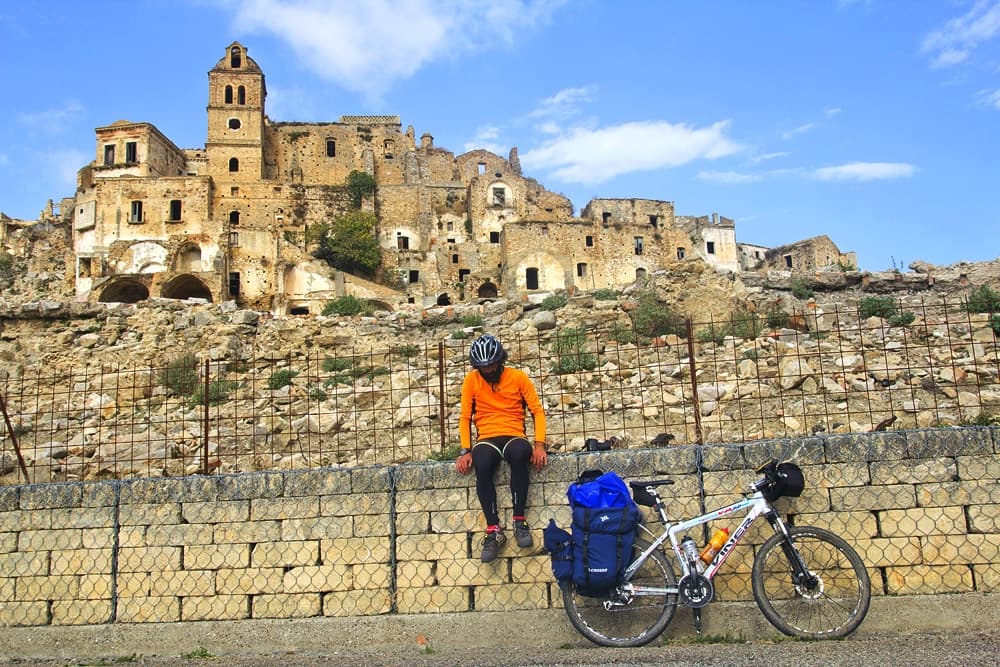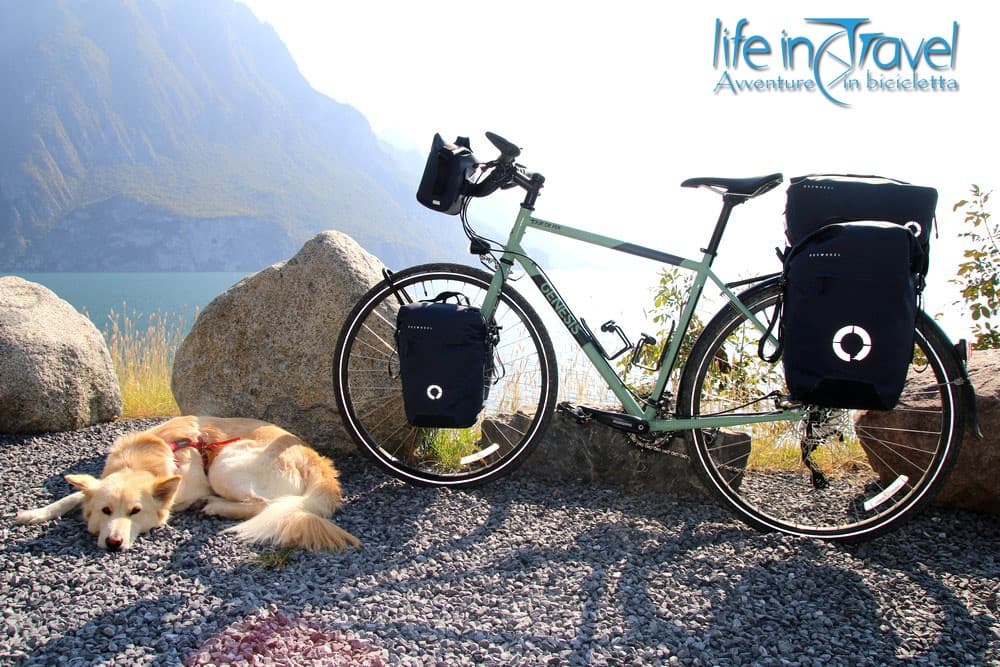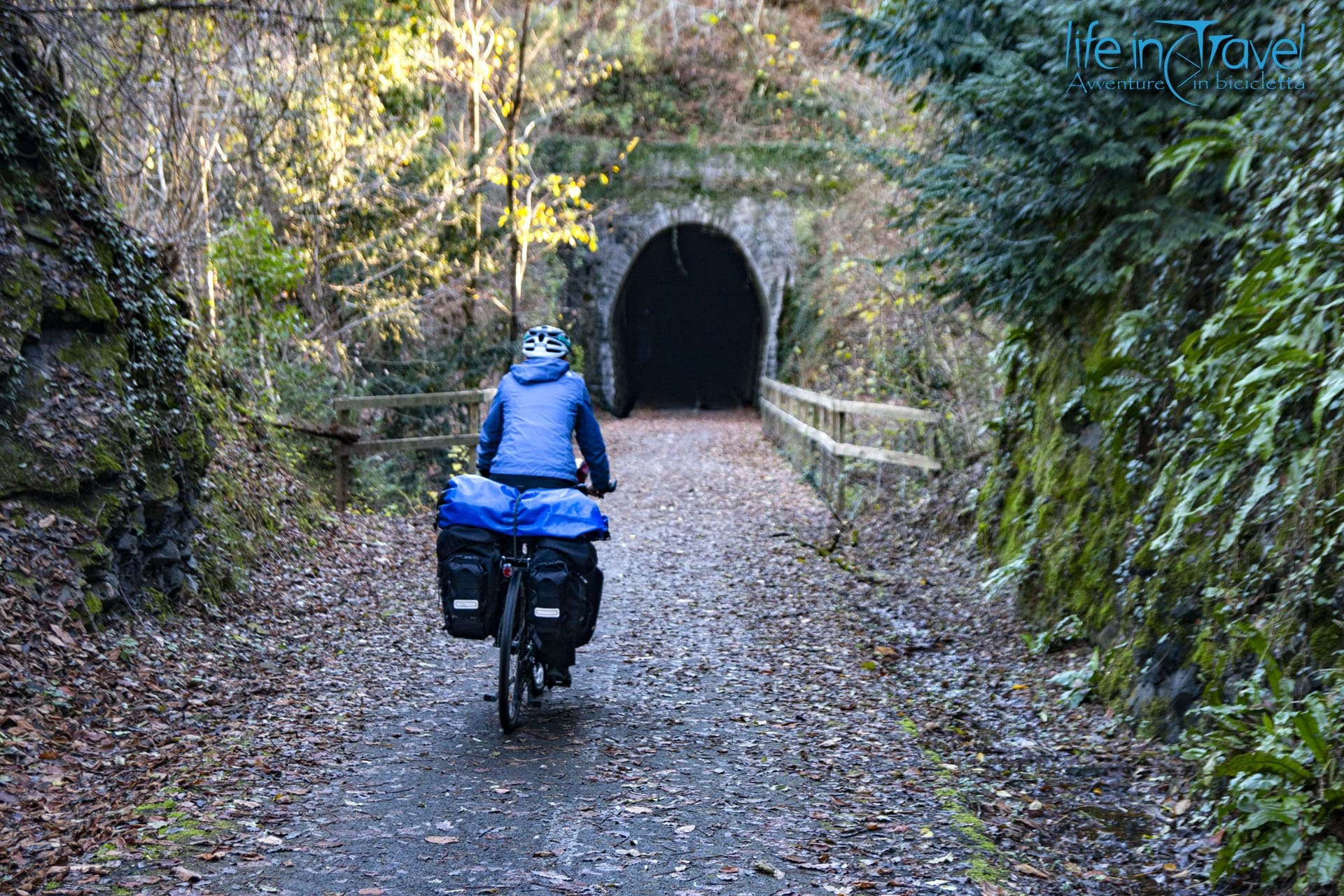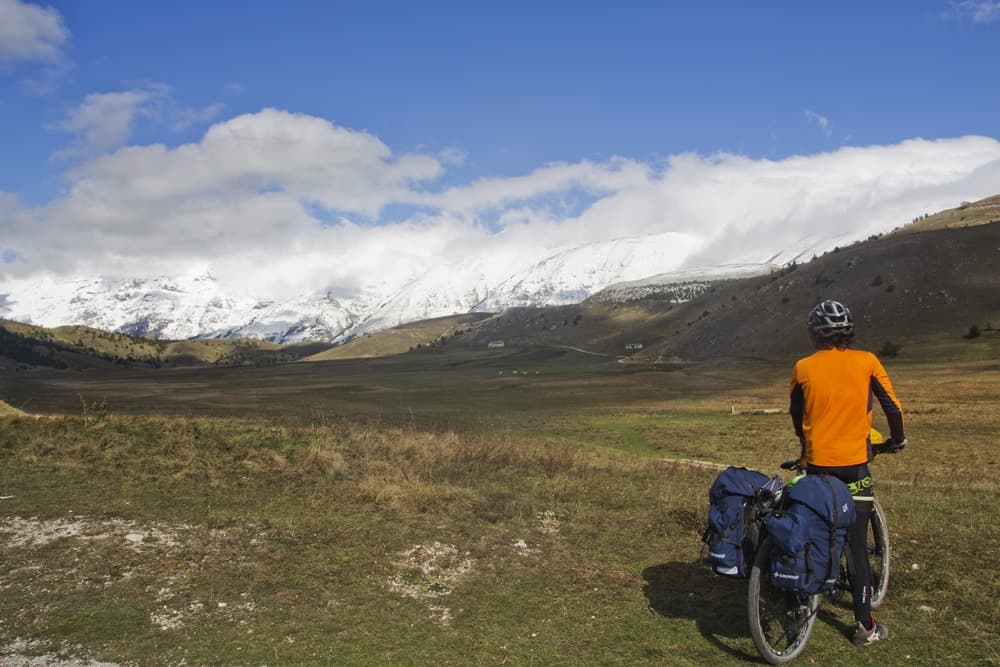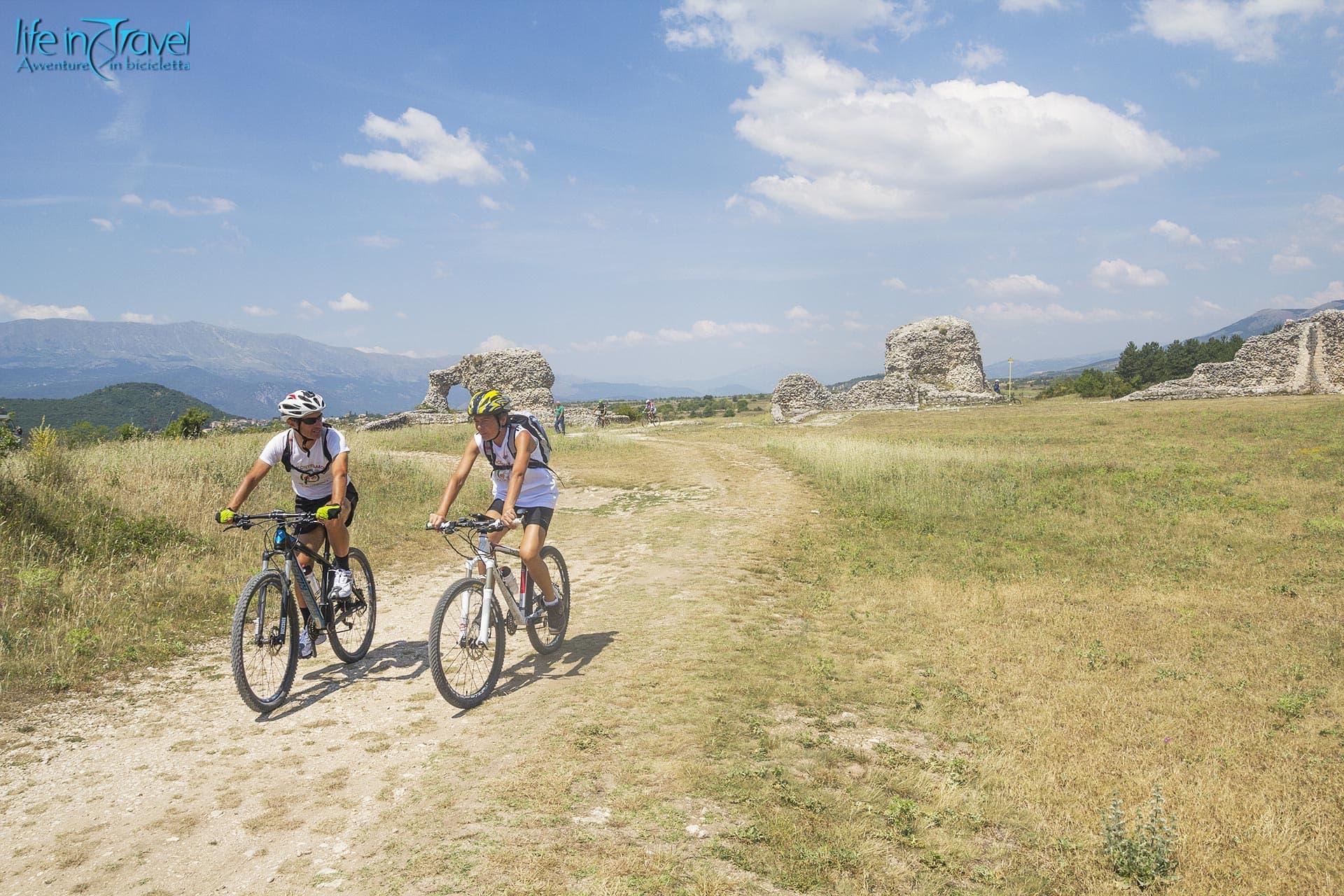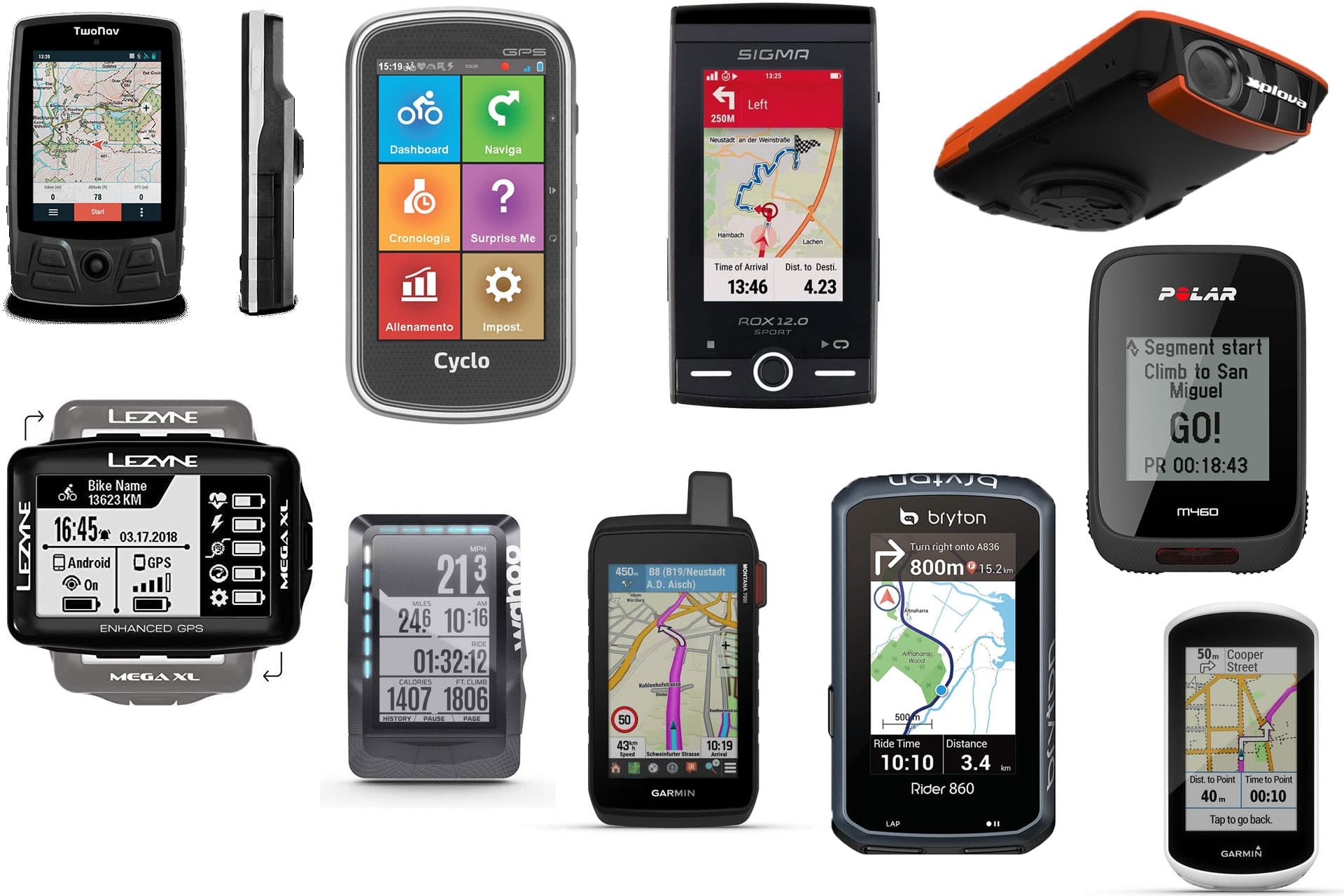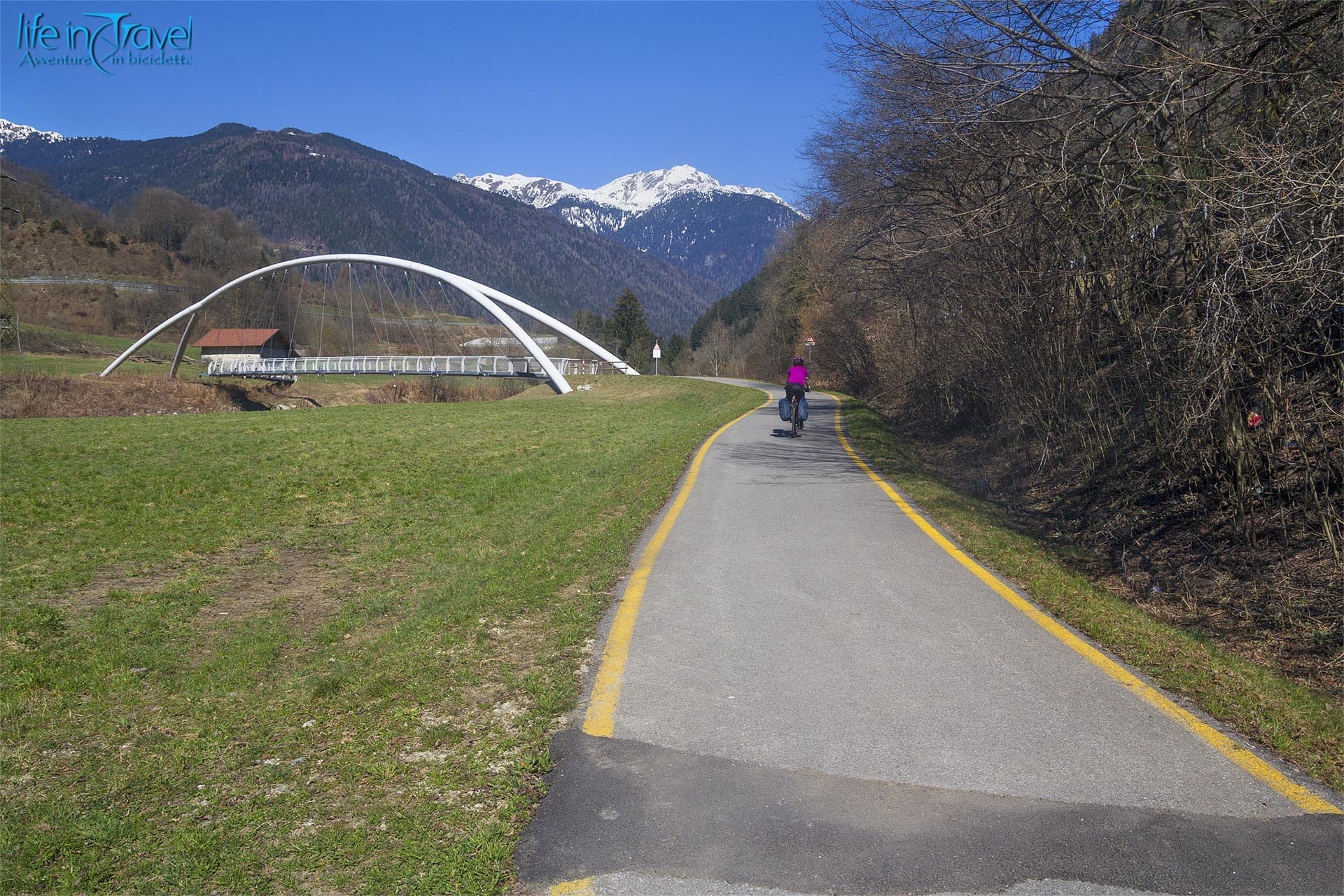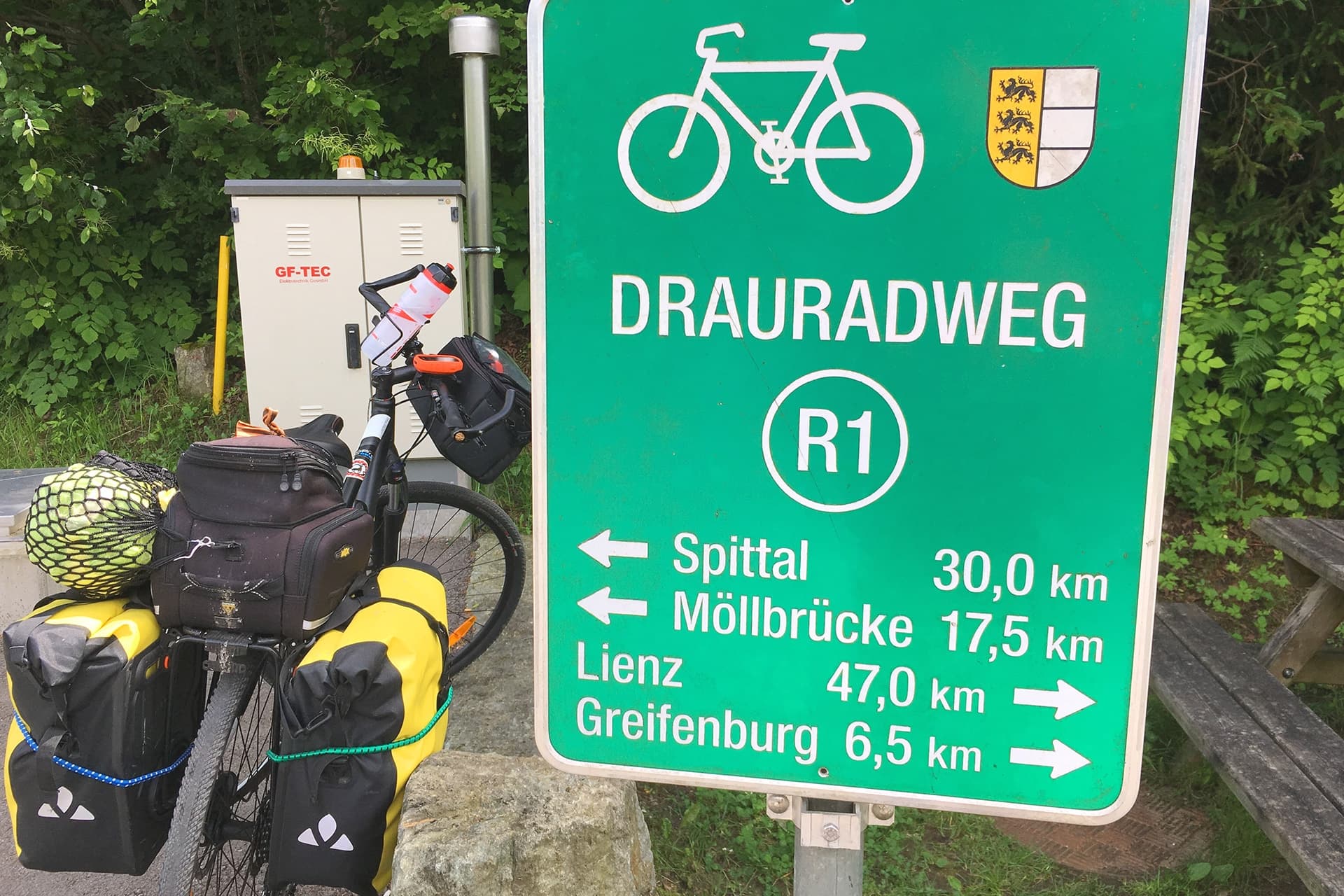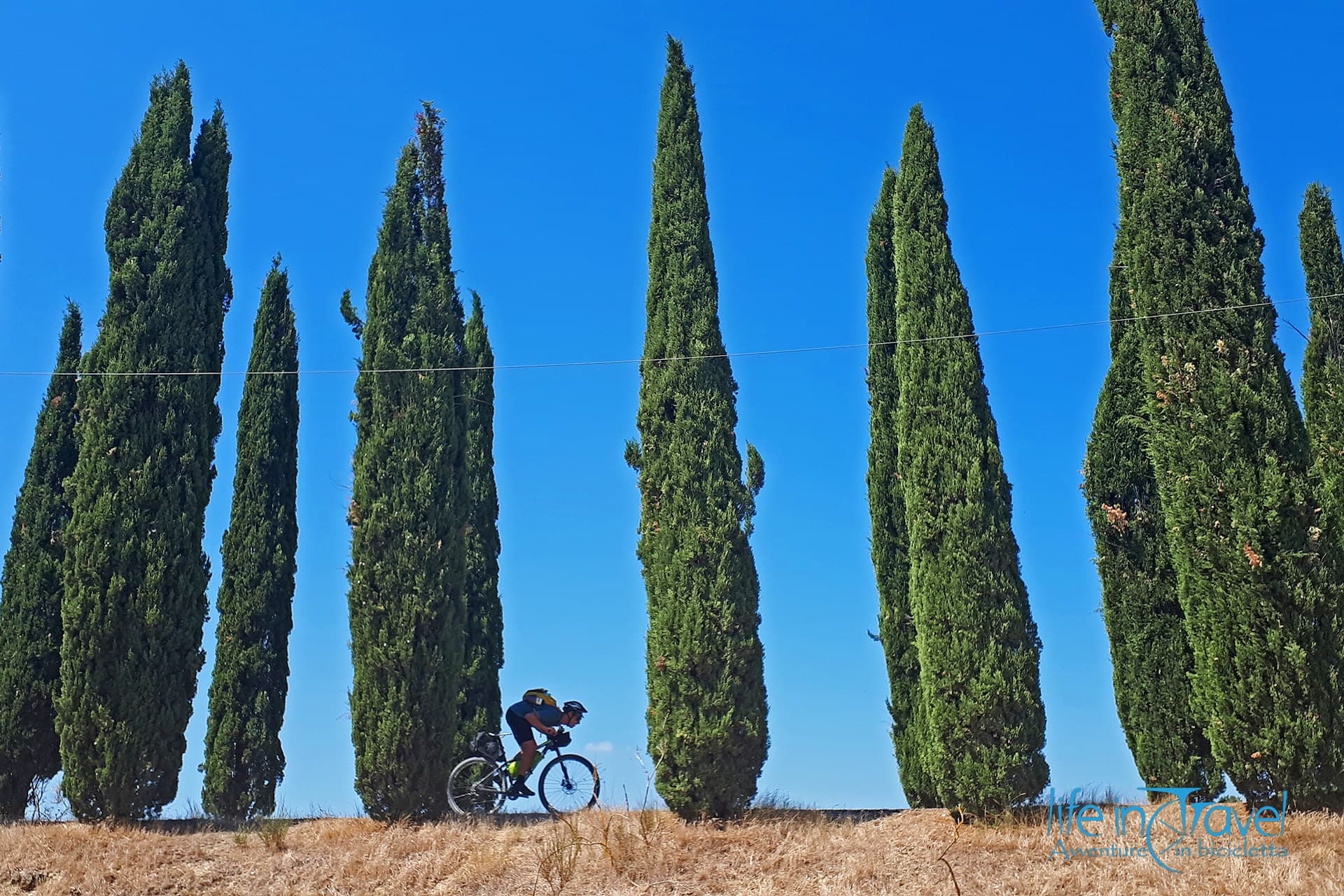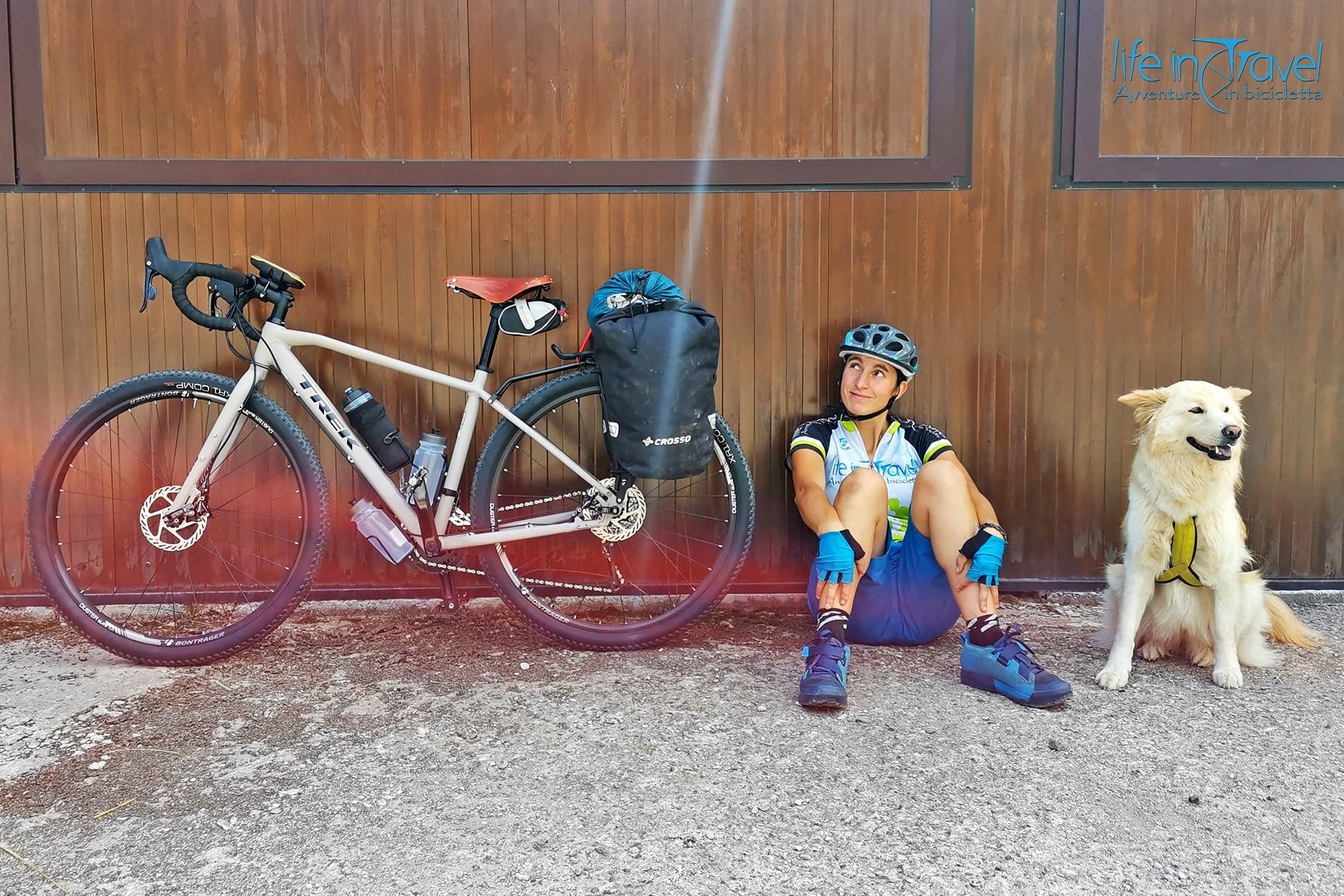The time to pack up and leave is always an important and exciting moment. Before getting there, we are often assailed by a Hamletic doubt: where to carry the weights on the bike when cycling? Panniers and racks on the front, or on the rear, or better yet both front and rear? Below I will try to answer these questions based on my experience, trying to explain bike weight distribution on touring bikes.
In this article
Not so long ago I compared two bikepacking setups showing bicycle weight distribution for a lighter trip. Today, thanks to Leonardo's experience we can get an answer to the question of how and where to carry the weights with a touring bike?
Recently, more and more often, I hear people say that loading weight on the front is better than on the rear. Is it true? Does it make sense or is it just fashion?
Where to carry the weights on a touring bike
As often happens, the answer to a simple question is not so basic. Again there is no absolute mantra. There are occasions when it is worth loading the bike only on the front fork and there are cases in which it makes more sense to use only the rear bags.
In reality, after Leo's 25 years of traveling by bike, we have come to the conclusion that in most cases the optimal solution is the use of both pairs of panniers, the front, and rear ones. If you really have to choose, for classic journeys the rear bags are more adaptable while in some specific cases, which we will see at the end, it may make sense to load only the front. However, let's get to the heart of this discussion, and let's evaluate the individual positioning of weight distribution on the touring bike according to different parameters.
Weight and space
Without a doubt, when considering volume and transportable weight, the rear panniers are unrivaled. Today it is possible to load bags with volumes up to 70 L on the rear rack and there are luggage racks with declared capacity up to 40 kg and more. The fact that the frame is loaded allows you to sleep relatively peacefully, especially if the rear stay is long and designed specifically for traveling as in the case of touring bikes.
Too much rear load can cause problems on bikes that are not designed for this purpose but are more performance-oriented, such as racing bikes or XC mountain bikes. Gravel bikes are a compress that I personally do not recommend to load too much and that I suggest pairing with bikepacking bags.
As for the volumes and weights on the front fork, I would advise everyone not to exceed 10-12 kg and 30 liters of transport. If it is true that a light load with a very low center of gravity on the front helps stability, especially for bikes born for performance and not for travel, the speech fails if you exceed the load on the front of the bike. The reasoning is even more valid if the handlebar is weighed down, much higher than the fork compared to the center of gravity of the bike-cyclist system.
Therefore in the case of handlebar bags, whether they are classic or bikepacking, load them with a few things or with the lightest and most bulky things. As for weight and transportable space, the rear side bags are much better.
Maneuverability
We have already partially introduced the discussion in the previous paragraph. Bike handling varies a great deal from unloaded to loaded - if you've tried to ride a bike without luggage and then loaded it, you know what I'm talking about. When you take it in your hand for the first time after the change of set-up you feel like you are driving another vehicle. But after a few strokes of the pedal, you will have found your set-up and will travel without problems.
In any case, about the stability and driveability of the bike, there are some distinctions to be made. Surely the load on the front, as mentioned before, helps to improve the stability of a bike (especially those with a rather short trail) on rough and uphill paths, while in fast descents it can become a handicap. However, you will not have to exceed the load, otherwise, the stability will be compromised.
Also, keep the bags as low as possible (better low-rider luggage racks rather than pizza bags, for example, if you are thinking about off-road bike trips). In the front bags, you will have to be very careful to keep the right and left weights balanced because every gram on the fork affects the steering.
This asymmetry suffers much less in the rear bags where even a few kilos of difference between the two sides can be tolerated. The center of gravity shifted back from the rear load can be felt a lot in challenging climbs while the driveability of a bike on asphalt will be optimal even if you load it on the rear. As for off-road handling, if you load the fork with a few kilos you can have an improvement in the overall stability of the bike and therefore the load in front will be better. On asphalt and in general, with large loads, it is easier to have a balanced bike with a load behind. The ideal solution is to have both pairs of bags, loading the front slightly and the rear more.
Wear of components
In all cases, the excessive load on one side of the bike (front or rear) can lead to greater wear of the components. This is especially true for the rear where the heavier weights are usually housed (keep in mind that the cyclist's kilos are also loaded mainly on the rearmost part of the bike). If you choose to travel by bicycle with rear bags only, you can easily go up to 15-20 kg of load, but furthermore, consider whether it is better to pair the rear panniers with two other front bags.
Wheels, tires, and spokes undergo considerable stress with a greater load, even if frames and rims are now made capable of withstanding heavy loads. However, if you want to do your vehicle a favor, carefully manage the materials and housings at your disposal. Since the cyclist also weighs on the rear wheel to avoid excessive wear of the components of that part of the bike, it is better to load the front part and give more balance to the bike + cyclist system.
Differences paved / unpaved roads
If you are a lover of dirt roads, take medium-short trips, but do not want to give up the side bags for the bikepacking ones, you could consider equipping yourself with only the front rack and a pair of 20 L bags. By loading the front of 5-6 kg of weight, perhaps coupling this set-up with a frame bag, you could have a well-balanced and reactive bike sufficiently on dirt roads and on some paths. 
If, on the other hand, you love cycle paths, asphalt and you rarely venture off paved paths, stick to the classic set-up with rear panniers and you will not regret it. The bike is smoother, the steering is more responsive and you can always have a handlebar bag with a camera that balances the rear load. For short trips with gravel bikes or in any case mainly on dirt, it is better to load the front part with weights between 4 and 6 kg. On long journeys and mainly on asphalt, it is better to carry your luggage behind because it allows you to load more weight without too many problems with the stability and balance of the vehicle.
Bike-pushing, portage, bike-lifting
In the event of insurmountable obstacles when on the saddle, you may have to lift the loaded bike or push it. In no case will it be too much fun, but without a shadow of a doubt having the main load on the rear will make your life easier.
The bike is easier to push and lift because the load will be integral with the frame and will not cause annoying movements of the headset as it can happen with bags loaded on the fork. On the rare occasions that this happens, the load behind it is much better.
Conclusions: where to carry weights on a bike?
Ultimately, as you understand, in my opinion, there are some cases where it may be worth loading the bike only with front panniers, but in most situations, the weight mounted on the rear rack is the most suitable solution.
In reality, especially when the load becomes large, the ideal remains to obtain a perfect bike weight distribution on four side panniers, possibly adding a tube bag or a top case above the rear luggage rack.
When to load the bike on the front fork? The most obvious example is that of a bike trip in which you need little material and you think you are mainly dealing with off-road sections. We adopt this solution, sometimes hybridizing it with some bikepacking bags, in the case of weekends or short trips in which we know that we will mainly tackle dirt roads as in the case of the Lunigiana route on the three-day trail in which Vero has mounted a saddlebag with front panniers.
If, on the other hand, we have to travel on trails, we prefer the MTB loaded in bikepacking mode. Another case in which it may be worth loading the bags from the front is when you want to travel on a bike that has poor or delicate components, which may not hold the extra load on the rear wheel (for example on a racing bike traveling light. it could be a solution to consider even if in this case you rarely have eyelets for a luggage rack on the fork).
Again, if you are very tall or very heavy, you may want to consider shifting the load on the front. In the first case, because the bags could be a hindrance and make you hit your heel (if your bike has a very short rear); in the second case to balance your weight with some front load.

In all other cases, the classic set-up with rear panniers is fine. This is my personal point of view on bike touring bike weight distribution. Do you have different ideas? Don't hesitate to share your experiences with us and let me know what you think.
Wherever you decide to carry the weights on the touring bike, enjoy your rides, and have good fun! In the end, that's what counts ????

